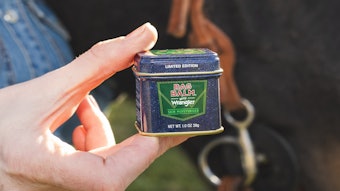
As the adage goes, the only constant is change; this is true for today’s personal care consumers, who increasingly demand versatile formulations that fit their lifestyles. Enter: alternative ingredients.
Alternatives to conventional ingredients come in handy when controversy strikes, or when striving to meet market trends or stay within budget. For this month’s installment of the Cosmetics & Toiletries Supplier Roundtable, suppliers were challenged with the question of how to utilize these "proxy" ingredients in formulations. The following are their responses.
Anne Rossignol-Castera, Oléos General Manager, Hallstar
The foundational wisdom of biomimetic natural actives is that substantiated wellness and cosmetic benefits reside within natural sources—and, if extracted effectively, are safe and sustainable proxies for comparable synthetic ingredients when used in beauty formulations. The unique and high-performance green Oléo-éco-extraction technology that was developed and patented in France by Hallstar’s Oléos team was built on this idea of gathering the best from nature to cover a broad range of functions. The resulting actives are holistically developed with a combination of several plants and oil-based solvents. Thus, while they are substantiated for a given property, they can often easily be used as proxy formulation ingredients for a broader set of specific desired functions.
For example, the trierpene-rich DIAM Oléoactif (INCI: Cocos Nucifera (Coconut) Oil (and) Quercus Suber Bark Extract (and) Oak Root Extract) combats inflammation and limits TNF-α secretion, and thus is ideal for sensitive and rosacea-prone skin. But its ability to reduce the inflammatory reaction to sun exposure also makes it a perfect proxy ingredient for sun care formulations, as well for baby care products aimed at reducing diaper rash.
Our PROPOLIS Oléoactif (INCI: Helianthus Annuus (Sunflower) Seed Oil (and) Propolis Extract), which is rich in fatty acids and vitamins A and E, is a premium anti-wrinkle active. It can be used as proxy ingredient for anti-acne formulations as it reduces bacterial proliferation and acts on local inflammation.
LIFT Oléoactif (INCI: Carthamus Tinctorius (Safflower) Seed Oil (and) Spilanthes Acmella Flower/Leaf/Stem Extract (and) Astragalus Membranaceus Root Extract (and) Ubiquinone (and) Tocopherol) is highly concentrated in spilanthol, saponins, omega 6 and co-enzyme Q10. These compounds improve softness and skin microrelief, but their natural properties make LIFT Oléoactif an ideal proxy ingredient for body and slimming care as well.
BLUE Oléoactif (INCI: Glycine Soja (Soybean) Oil (and) Polyglyceryl-3 Diisostearate (and) Oryza Sativa (Rice) Germ Extract (and) Oryza Sativa (Rice) Extract) specifically offers a global anti-pollution and anti-blue light solution, but its ability to reduce inflammation by boosting the cyclooxygenase-2 pathway and the repair system of cells means that it has broad applications for sensitive skin formulations.
Sabrina Behnke, Ph.D., Global Product Manager—Cosmetic Ingredients Division, Symrise Inc.
In an age where simple products with short ingredient lists are popular, using multifunctional ingredients can help the formulator cut down on the overall number of ingredients while maximizing formula benefits and optimizing consumer experience.
Symrise’s multifunctional 1,2-alkanediols are effective moisturizers and sensorial profile-enhancers that also help with product protection. Adding one of these 1,2-alkanediols–such as Hydrolite 5 (INCI: Pentylene Glycol); Hydrolite 6 (INCI: 1,2-hexandiol); or Hydrolite CG (INCI: Caprylyl Glycol)—to the formula will enhance moisturization, optimize the sensorial experience and increase bioavailability of your active ingredients. Simultaneously, the preservative requirement in the formulation will be lowered significantly. Symrise recently launched Hydrolite 5 Green (INCI: Pentylene Glycol), a plant-derived pentylene glycol manufactured from sugarcane. This new generation will bring all the benefits of the Hydrolite 5 in the field of natural cosmetics while improving the naturalness of formulas.
Another 1,2-alkanediol in Symrise’s portfolio, SymClariol (INCI: Decylene Glycol), helps to normalize oily skin. Decylene glycol has been shown to be a functional addition to formulations by aiming to reduce blemishes and breakouts. It not only protects formulas by boosting product protection, but also helps protect skin by balancing sebum and unwanted microorganisms.
As part of Symrise’s multifunctionals portfolio, SymSave H (INCI: Hydroxyacetophenone), is a powerful nature-identical antioxidant that protects formulas from degradation and spoilage while also protecting skin from damaging effects of free radicals. Our research has found that SymSave H also has soothing benefits, making it a great choice for formulations that intend to calm skin redness and irritation.
SymOcide C (INCI: o-cymen-5-ol) is an alternative to traditionally used materials such as formaldehyde-donors, parabens, isothiazolinones and organohalogens. When used at a concentration of 0.1%, it allows the formulator to keep overall preservative levels very low. To achieve broad-spectrum activity, it can be combined synergistically with organic acids or multifunctionals. SymOcide C also brings in additional antioxidant and antimicrobial properties, the latter of which is beneficial for oral care applications.
Future Roundtables
To participate in a future Supplier Roundtable, contact Cosmetics & Toiletries assistant editor, Brooke Schleehauf, at [email protected]. Upcoming topics will cover:
Formulating Multifunctional Products (October)
Hitting the Rheology Bullseye (November)
Balanced Skin Care Solutions (January)
Formulating Sustainable Products(February)
New Approaches to Anti-pollution (March)










